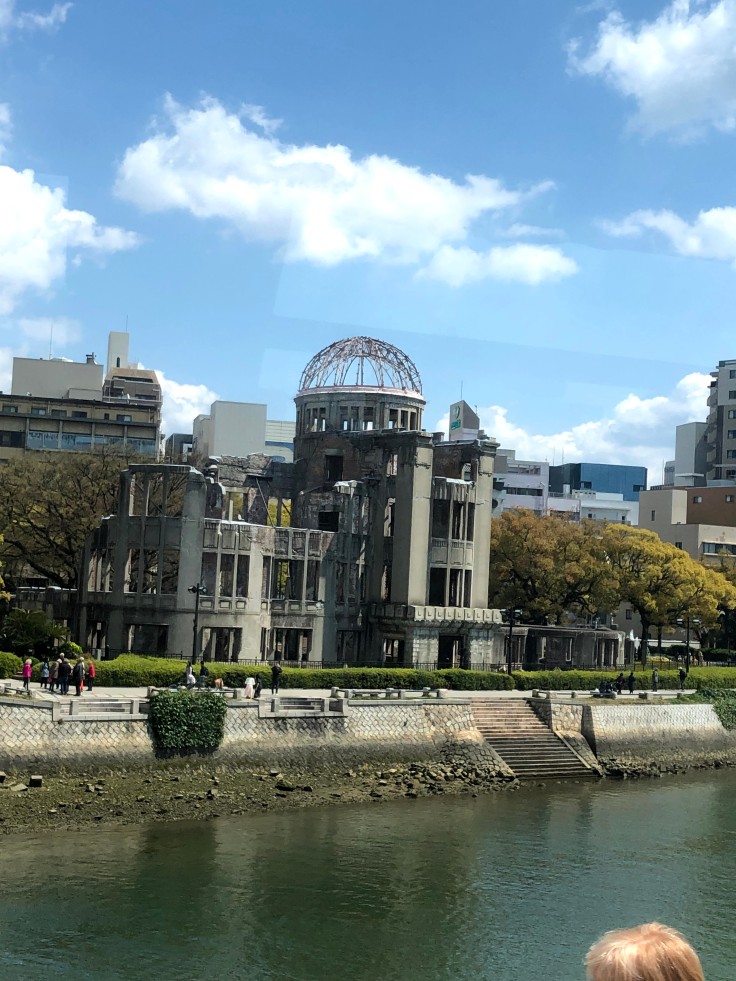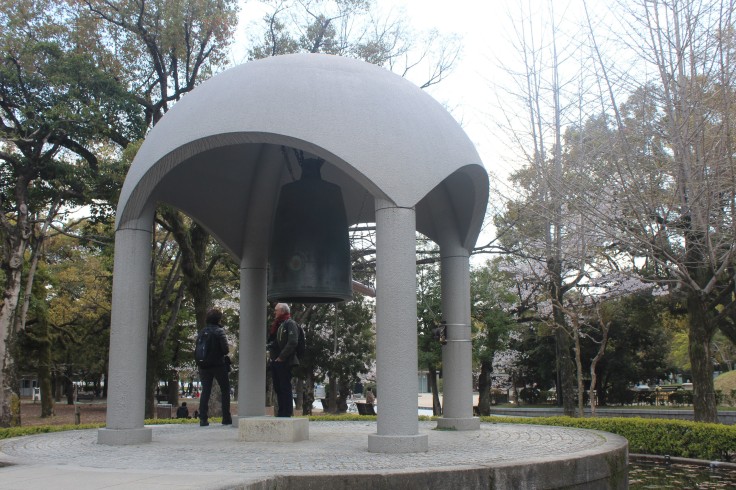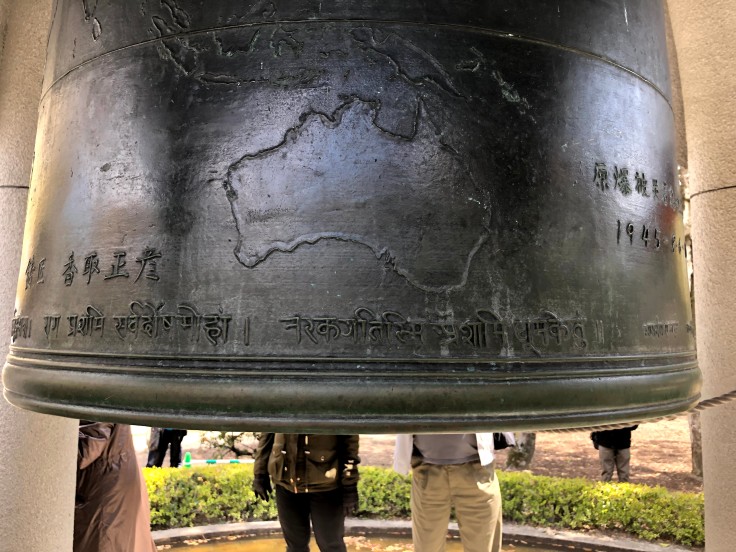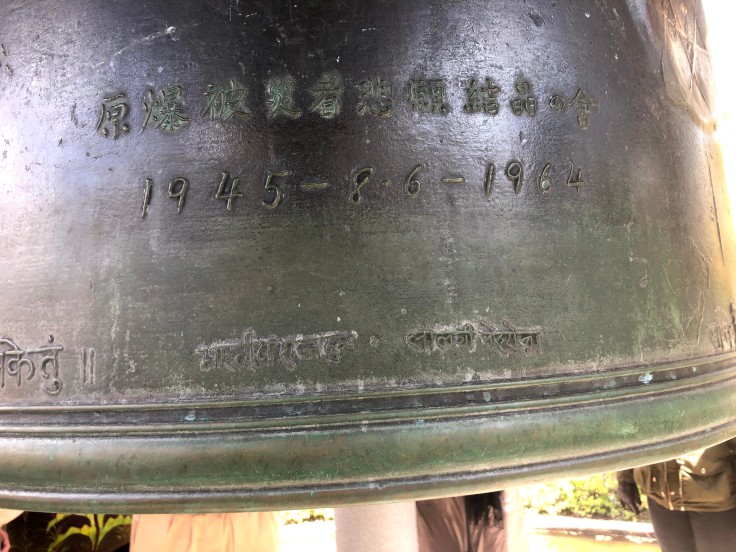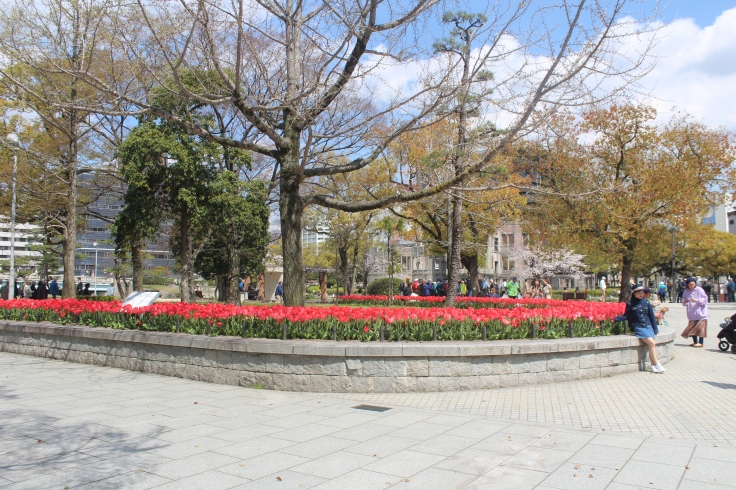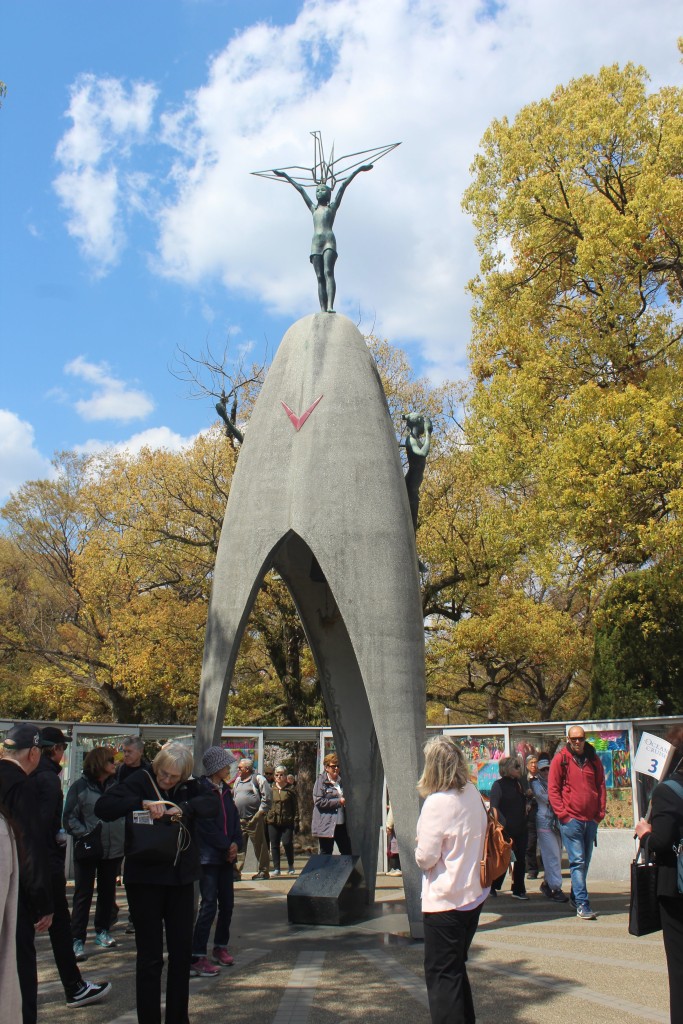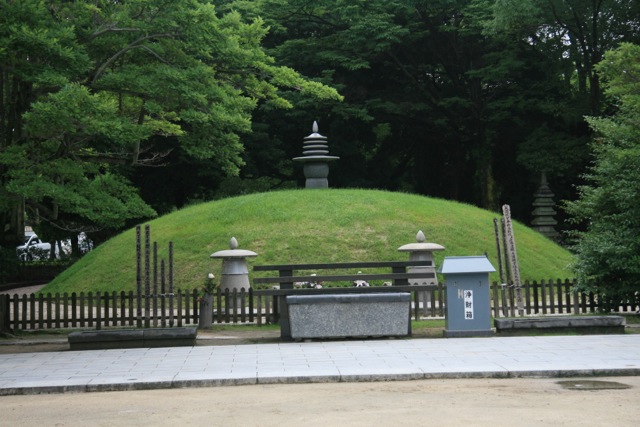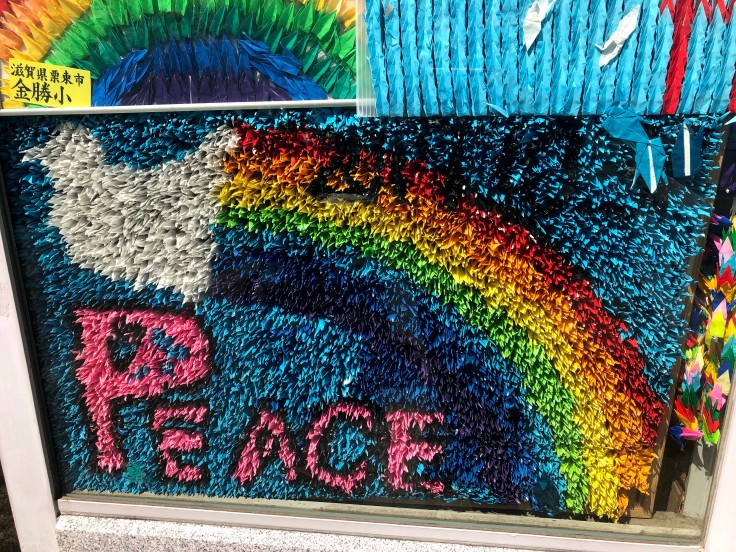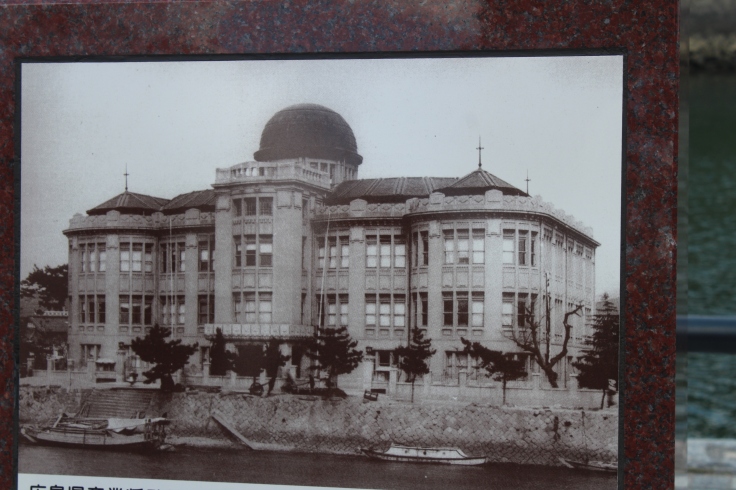After returning from Miyajima (see previous post), we enjoyed a traditional bento box lunch and made our way to the main event of the day, Hiroshima Peace Memorial Park. To help the 45-minute drive go a little more quickly our guide taught us how to make origami samurai helmets. Ken was an excellent student, don’t you think? This is where the hijinks ended.
During WWII Japan’s Second General Army and Chugoka Regional Army were headquartered in Hiroshima. The Army Marine Headquarters was located in the port. The city had large military supply depots and was a key shipping center for Japan. On Monday, August 6, 1945 at 8:15 a.m. local time the U.S. dropped an atomic bomb on the city. Seventy thousand lives were immediately lost and the city was leveled. The Hiroshima Peace Memorial Park pays tribute to those who died and advocates for world peace. It is situated in what was once the busiest area of the city, and includes the A-bomb Dome, the shell of what remains of what was a grand structure built in 1918 as an exhibit hall commandeered for military offices during the war. The building is exactly as it was immediately following the bombing. Hiroshima rebuilt after the war and proclaimed a City of Peace by the Japanese Parliament in 1949. It is now a thriving city with 6 rivers, 93 bridges and more than 1.2 million people. The stark contrast of this bombed-out building against the vibrancy of the city as it stands today is a constant and sober reminder of what human beings are capable when we fail to make an intentional effort to preserve peace.
Across from the Dome is the Peace Bell. On its surface is a world map with no national boundaries. This is to symbolize that we are all one world. Visitors to the bell can ring it using a wooden log that hangs outside the bell. Where the log makes contact with the bell is the elemental symbol for atomic energy. On the opposite side is a mirror to reflect the heart of the person ringing the bell. Near the bell is a pond. After the bombing lotus leaves were used to treat peoples’ burns and sooth their souls. Lotus seeds were planted in the pond and every year around ugust 6th they bloom.
Near the Peace Bell is the Atomic Mound, where the ashes of the 70,000 people who died are buried. Inside the mound lies a vault that contains the ashes of roughly 70,000 individuals whose ashes were unclaimed because the entire family had perished or because they were never identified. Every year, Hiroshima City publishes a list of people whose identity has been learned, hoping that relatives will emerge to claim the ashes. Of the 2,432 individual containers of ashes identified and originally placed in the vault in 1955, 824 remain unclaimed.
Continuing toward the Peace Memorial Museum we passed through the Children’s Memorial, built in memory of the children who died. Every October school children from around Japan create paper cranes, in chains or in works of art, and bring them to the Memorial. Just past the Children’s Memorial is the Flame of Peace, which will continue burning until all nuclear weapons have been destroyed. Next to the Flame is a marble coffin with the names of all who have perished and continue to perish as a result of the bomb are listed, including those of U.S. POWs. New names are added every year. When you look through the center of the structure covering the coffin, you can see the previous monuments lined up in a straight line, an avenue of monuments with a single purpose.
Finally we arrived at the Peace Memorial Museum, committed to preserving the memory of that day and encouraging us to never allow it to be repeated. The pictures from our visit speak for themselves.





